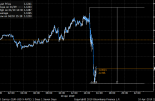SSGA-SPDR: Five Sectors that could benefit or suffer from inflation

'For many investors, inflation has overtaken COVID-19 as the largest threat to markets. While it is up for debate how high and for how long prices may rise, we expect inflation worries to persist at least through the near term as stimulus, commodity prices and reopening feed through.' That states SSGA-SPDR in a market commentary.
Inflation is likely to be stronger in the US, which is facing rapid economic recovery, than in parts of the world that face output gaps. Here we consider which sectors stand to gain – or lose – the most if inflationary pressures pick up.
Given the impact of eroding pricing power, spending (retail or capex) may be pulled forward but benefits for some will be negated by higher input costs. The net result by sector is determined by a combination of factors such as elasticity of demand or availability of product.
Another major consideration is the impact of higher interest rates, which often accompany inflationary pressures, and have their own divergent consequences on sectors. Recently, we have seen bond yields increase but major central banks look far from tightening behaviour.
Overall, cyclical sectors tend to outperform defensive ones during periods of rising inflation.
Below we consider the varied impact of rising prices on five sectors: three where inflation could have a positive impact and two that may suffer.
[1] Materials: a sector play for the commodity supercycle
Commodities, including all types of metals, oil and soft agricultural products, have seen a strong start to 2021 and are one cause of higher inflation expectations. Prices are responding to both the demand-pull drivers of economic reopening and the supply-push impact of COVID-related disruption.
We believe mining companies are well placed in the current cycle to pass on higher industrial metal prices to their customers. Even though price increases often stimulate new supply within this industry, permissioning and building of new mines can take years so current demand-supply dynamics could persist.
Chemical manufacturers and building product producers are facing similar beneficial demand and supply trends, although there will be cost pressures from labour and raw material costs.
[2] Energy: highest inflation beta
The rise in crude oil prices of almost 25% year to date is feeding through to high levels of fuel inflation across developed and emerging markets. The Energy sector has a high sensitivity to this rise. The correlation of 0.6 between the S&P 500 Energy and inflation over the last 10 years is three times the average for US equities.
There is a direct linkage through oil and gas prices, which are a core but volatile component of CPI figures, and Energy stocks, which have a strong relationship with crude oil futures. For every 1% rise in CPI, S&P 500 Energy prices move 9% (over last 10 years).
The ability of Energy companies to pass on higher prices varies by industry but overall the benefit can be seen in the large earnings upgrades of recent months. Looking ahead, the current demand-supply balance could weaken with any deterioration in the OPEC+ agreement to restrain production and the return of fracking at higher price levels.
[3] Industrials: reopening and stimulus beneficiary
The Industrials sector is a diverse grouping, including aerospace manufacturers, electrical engineering, transportation providers and consultancies, so is not easy to generalize. However, the sector traditionally benefits from cyclical trends at this stage of economic recovery. Possible drivers this year include a return of capital expenditure, continued modernisation of manufacturing processes and new orders as a consequence of fiscal stimulus packages.
The price components of the latest US PMI figures signal intensifying inflationary pressures, with manufacturers suffering from input price increases, close to four-year highs, as well as benefiting from the output price measure at its highest level since January 2017. Again, it is important to watch the ability of different industries in passing on cost increases.
[4] Utilities: limited pricing power
Utility companies have a complicated relationship with inflation. Currently, electricity, gas and water suppliers face higher input costs from commodities such as coal and natural gas, which could impact profit margins. Utilities have limited pricing power given a significant part of their revenue streams is regulated.
Local country or state regulators oversee prices, production and environment in return for granting monopoly power. These commissions set prices to allow utility providers to earn a specified return on capital from their activity. If costs for these companies rise due to inflation, they will usually be allowed rate increases to pass on to customers through network tariffs. However, depending on the regulatory agreement, higher costs may not be recoverable until the next regulatory cycle.
An estimated 60% of global sector earnings is derived from inflation-hedged regulated assets, giving some protection, but it varies by region and activity. Electricity generation and supply are largely deregulated (i.e. profit is exposed to market prices), whereas transmission and distribution tend to operate under regulated frameworks and can claim to recover inflation over time. Thus integrated utilities, which comprise much of the sector, do not necessarily have a high degree of inflation protection.
[5] Consumer staples: price-sensitive consumers and heavy competition
The Consumer Staples sector contains food retailers, food and beverage producers, and household and personal good suppliers. These companies are relatively defensive because of the relative inelasticity of demand for the goods they provide, but they do suffer from low barriers to entry.
The amount of competition, as well as heavy commoditisation of product and own labeling, mean companies often struggle to pass on costs unless they own leading brands or a unique offering. Profit margins are under constant pressure, which can intensify during inflationary periods.
Changes to the supply chain brought about by the pandemic have been unhelpful, and may force sourcing to change in the future. Also, the desire to produce more sustainably often raises production costs. However, there are some positive longer-term trends, including premiumisation and better awareness of health and wellness, which could see product pricing rise.
Recent data shows very little food price inflation and small increases ahead of the seasonal average for household goods. At the same time, input costs across the sector are facing commodity price pressures and distribution costs.










